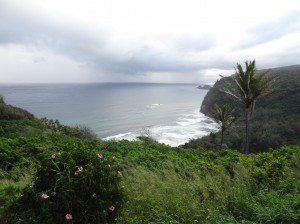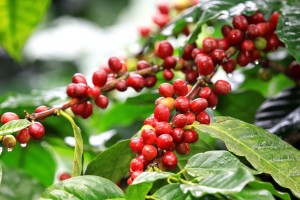 Coffee was first introduced to Hawaii in about 1813, via an ornamental coffee tree brought to Honolulu by Don Francisco de Paula y Marin, the Spanish physician to King Kamehameha the Great. Soon, it became an agricultural mainstay of the islands, along with sugar cane and pineapple.
Coffee was first introduced to Hawaii in about 1813, via an ornamental coffee tree brought to Honolulu by Don Francisco de Paula y Marin, the Spanish physician to King Kamehameha the Great. Soon, it became an agricultural mainstay of the islands, along with sugar cane and pineapple.
However, several circumstances combined to reduce the amount of coffee grown on the Hawaiian Islands, including the coffee blight of 1858, the result of an insect infestation; the world coffee crash in 1899, and the labor-intensity of coffee agriculture.
Of the small amount of land growing coffee in Hawaii today, the most famous region is Kona. Located on the western slopes of the Big Island of Hawaii, the Kona district contains the heart of Hawaii’s “coffee belt,” which is about two miles wide and at the highest point measures 2,000 feet in elevation. The area has a microclimate ideally suited to growing coffee, in part because the prominent volcanoes provide rich soil and help block the rains that fall prominently on the eastern side of the island. The small size of the growing area and the high quality beans it produces contribute to a high price and a high demand.
 There are two types of Kona coffee, each with several grades. Grades are determined by size, density, moisture content, and defects. Type I grades are Extra-Fancy, Fancy, Kona #1, and Prime. The grades for Type II are Kona #1 Peaberry and Kona Peaberry Prime. The term “peaberry” refers to the shape of the bean. Normally the fruit of the coffee plant contains two beans that develop with flattened facing sides, however, if only one of the two seeds is fertilized, the single seed develops into an oval (or pea-shaped) bean. Kona is, along with Tanzanian Coffee, one of the two main types of coffee associated with peaberry beans.
There are two types of Kona coffee, each with several grades. Grades are determined by size, density, moisture content, and defects. Type I grades are Extra-Fancy, Fancy, Kona #1, and Prime. The grades for Type II are Kona #1 Peaberry and Kona Peaberry Prime. The term “peaberry” refers to the shape of the bean. Normally the fruit of the coffee plant contains two beans that develop with flattened facing sides, however, if only one of the two seeds is fertilized, the single seed develops into an oval (or pea-shaped) bean. Kona is, along with Tanzanian Coffee, one of the two main types of coffee associated with peaberry beans.
These grades originated in the 1980s, when the word Kona was used on a wide variety of products. In order to protect the region of origin and control the quality of the product, the Hawaii Department of Agricultural created the grades and required inspection of beans, proof of geographic region of origin, and proper labeling of its coffee.
Coffee labeled as Kona must be completely from the Kona District and include the identifier “100% Kona Coffee,” a phrase trademarked by the Hawaiian Department of Agriculture in 2000. Kona Blends are allowed and may be a combination of Kona and beans from other regions, but must contain at least 10% Kona beans with the percentage of Kona beans clearly displayed.
As with other coffee regions, the producers and the state have had to be very protective over the Kona name and label, as some third-party companies were found to be labeling Central American coffee as Kona. These mislabeled beans made it to coffee-store chains such as Starbucks and Peet’s, who upon learning of the issue contributed to a settlement and agreed to buy future beans directly from Kona farmers.
If this story sounds similar to those you have heard regarding wine, brandies, types of cheese and other agricultural products, you are correct!
If you would like to learn more about coffee, you may be interested in SWE’s Beverage Specialist Certificate program, which in addition to coffee, includes information on wine, beer, spirits, sake, tea, bottled water, and ready-to-drink beverages.
Click here to return to the SWE Website.